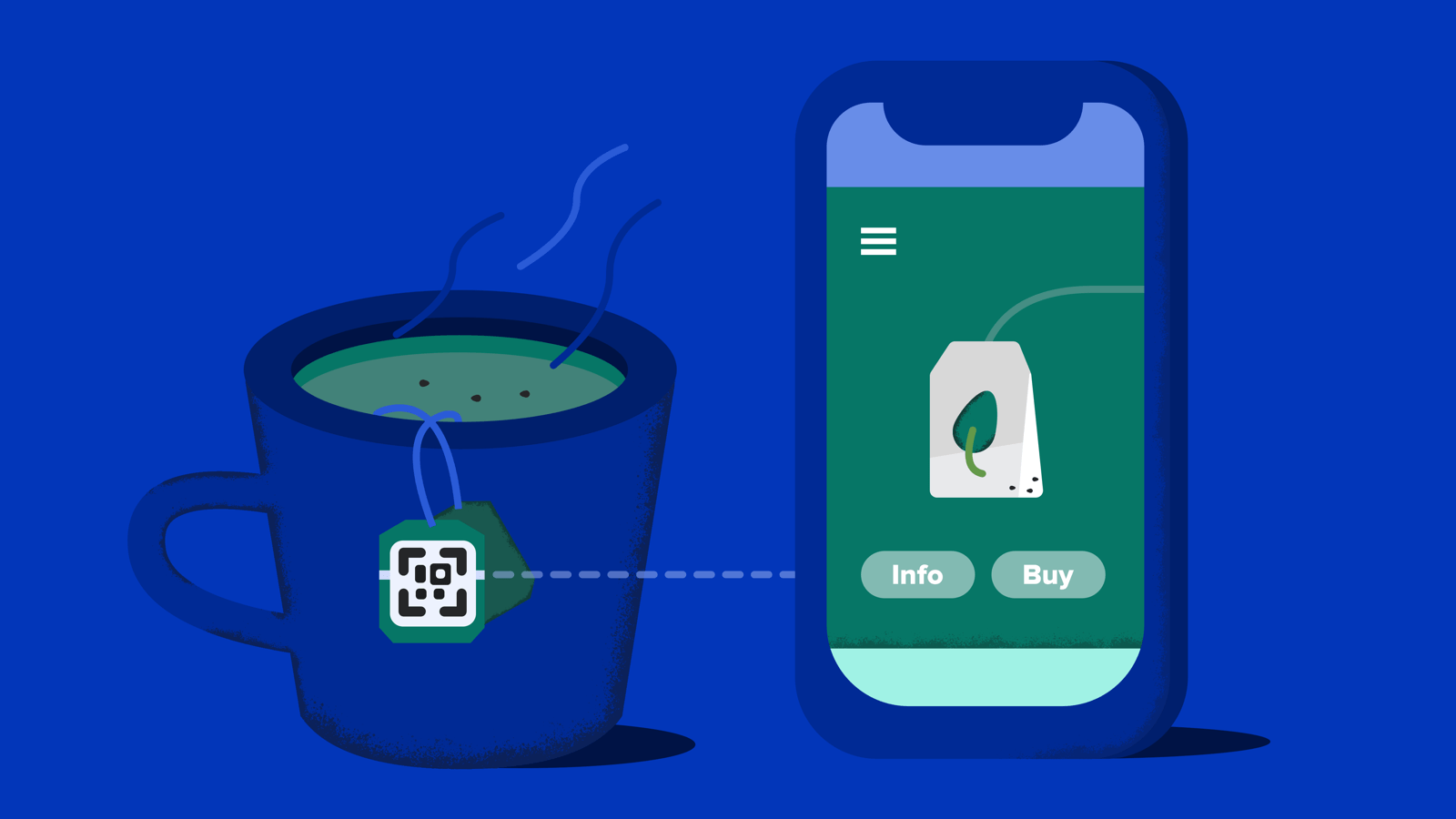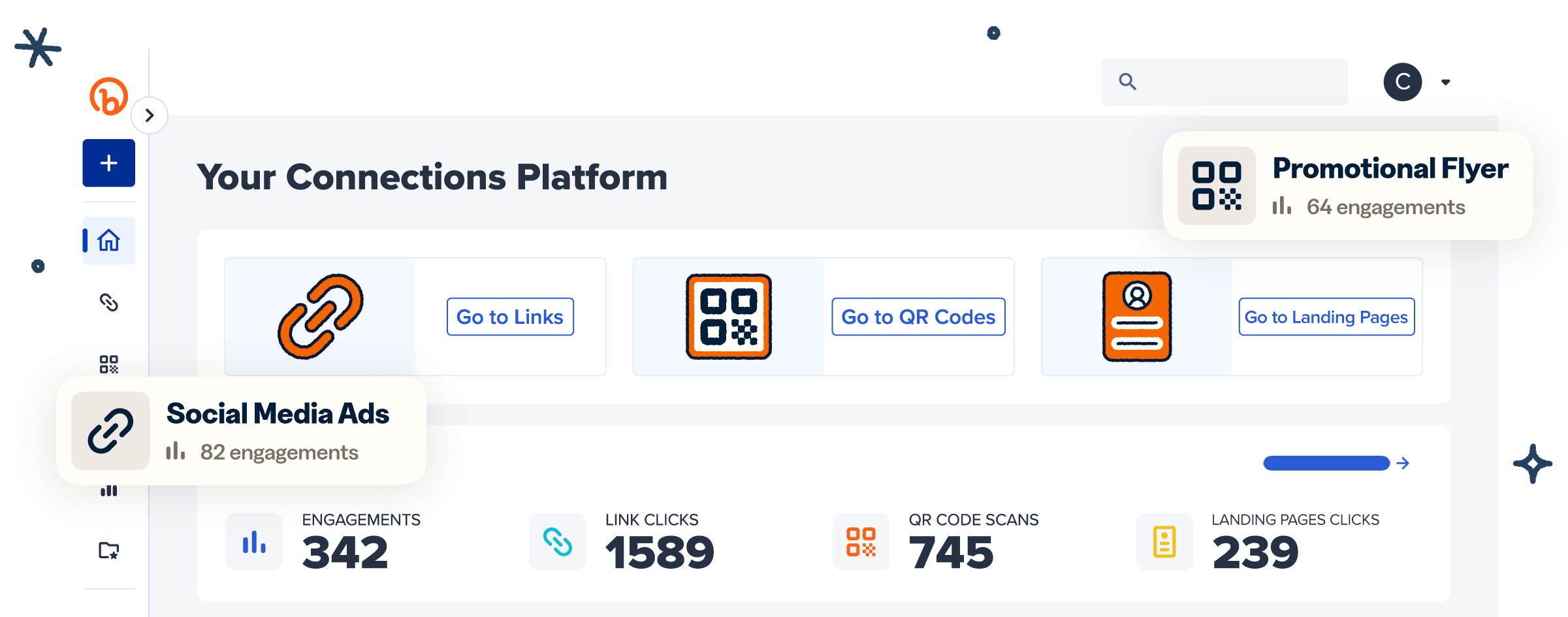The digital era has revolutionized the retail industry, shifting the shopping experience from traditional brick-and-mortar stores to online platforms. With the rise of e-commerce and mobile shopping, customers expect convenience, efficiency, and personalized experiences. This has led to integrating technology in retail, with QR Codes emerging as an effective solution to boost retail purchases.
QR Codes, a 2D barcode technology, provide seamless and interactive shopping experiences. With a single scan, customers can access product information, reviews, and promotions and complete purchases straight from their mobile devices. This increases customer engagement, boosts sales, and enhances brand loyalty for retailers.
Read on to discover how popular retail QR Codes are, how they enhance customer experiences, and how established retailers use them to increase sales.
How popular are QR Codes in retail today?
Japanese corporation Denso Wave invented Quick Response (QR) Codes in 1994 to track vehicle parts during manufacturing. The company realized one-dimensional barcodes were limited in data capacity, leading to the development of the two-dimensional QR Code.
However, it wasn’t until the rise of smartphones in 2012 that QR Codes gained global recognition and widespread adoption.
Today, QR Codes are ubiquitous in the retail industry, with over 83.4 million smartphone users scanning QR Codes in the U.S. alone in 2022. Insider Intelligence expects this number to grow to 99.5 million by 2025, indicating a steady increase in QR Code usage among consumers. It gets even better:
- Allied Market Research projects the global QR Code payments market to reach $35.07 billion by 2030, up from $8.07 billion in 2020.
- Seventy-five percent of Americans plan on using QR Codes in the future, with 59% stating they will become a permanent part of using their smartphones.
- Fifty-two percent of full-service restaurants in the U.S. have QR Code menus, with 33% of operators reporting enhanced operations.
- Over 5.3 billion mobile users redeemed QR Code coupons in 2022 compared to 1.3 billion in 2017.
The future for QR Codes looks bright, with more retail brands and consumers embracing them for convenience, security, and speedy transactions.
What sellers should know about QR Codes for retail
It’s evident that QR Codes offer retail stores immense potential to boost sales, customer engagement, and loyalty. However, simply creating and including a QR Code in your marketing strategy won’t guarantee results.
To harness the power of QR Codes, sellers must first understand what they can gain by integrating the codes into their marketing campaigns.
Ease of use and accessibility
QR Code placement and scanning ease are critical for successful use. Sellers must place the codes strategically, where customers can easily scan them. This could be on product packaging, promotional materials, in-store displays, and social media platforms.
The codes should be adequately sized (at least 2 cm × 2 cm or approximately .8 in x .8 in), have enough white spaces, and use high-contrast colors for easy scanning. Provide clear instructions on QR Code scanning and what customers can expect.
Avoid linking the codes to long, complex website URLs, which may discourage users. Instead, use shortened URLs or direct users to a landing page with relevant information and a clear call to action. Accessible and user-friendly QR Codes translate to increased engagement and conversions.
Valuable and relevant content
Linking the QR Codes to valuable and relevant content improves the in-store experience, increases customer trust in the brand, and drives sales conversions. Retailers can use QR Codes to provide:
- Detailed product information, reviews, and ratings for informed purchase decisions
- Personalized offers or discounts to incentivize purchases
- Links to social media pages for user-generated content and customer testimonials
- Links to loyalty programs or subscription sign-ups for customer retention and repeat purchases
- Mobile payment methods for contactless and secure transactions
Make the content shareable on social media platforms to reach a wider audience and encourage word-of-mouth marketing.
Integration with marketing strategies
Retail marketing campaigns must be cohesive and consistent across all channels, including print, social media, in-store advertising, and email marketing. Omnichannel consistency reinforces brand messaging, increases brand awareness, and improves customer recall.
QR Codes, when used correctly, add interactivity and multi-sensory experiences to traditional marketing channels like print media while maintaining brand consistency. For instance, retailers can place QR Codes on billboards or business cards that direct customers to special offers, landing pages with sign-up forms, or social media pages for customer engagement.
Tracking and analytics
Depending on the type of QR Code used, retailers can track important metrics to gain insights into customer behavior.
Retailers can use these metrics to refine future marketing strategies and identify new opportunities for customer engagement. Bitly’s analytics dashboard offers to-the-minute engagement metrics to track and analyze QR Code scans for data-driven decision-making, including:
- Clicks and scans over time
- Clicks and scan by referrer
- Top performing by clicks and scans
- Clicks and scans by location
Consistent branding and design
Aligning QR Code design with branding elements such as colors, logos, fonts, and patterns improves brand recognition and customer trust. Custom QR Codes are aesthetically appealing and offer more design flexibility.
Bitly’s QR Code generator allows retailers to create QR Codes and customize them with brand colors, logos, and frames to enhance visual appeal and brand alignment.
5 ways QR Codes enhance the shopping experience for customers
According to an Accenture report, companies prioritizing customer experience realize, on average, three-and-a-half times the revenue growth of their competitors. Below are five ways QR Codes can enhance the shopping experience for customers.
1. Contactless payments
The COVID-19 pandemic accelerated the adoption of contactless payment options. QR Codes enable customers to make secure and seamless transactions without cash or physical contact with point-of-sale (POS) devices.
Customers can scan a QR Code with their smartphone camera during checkout and complete the payment process in seconds. This eliminates the need for physical debit and credit cards or cash and speeds up checkout, reducing wait times and improving customer satisfaction.
For instance, a clothing store can place QR Codes at the cash register, which customers can scan with their mobile payment app like Apple Pay or Google Pay to complete the purchase.
2. Instant view of product details and reviews
Detailed product information and reviews are critical for customers to make informed purchasing decisions. QR Codes provide a quick and easy way for customers to access detailed product information, including specifications, ingredients, or instructions.
They can also read customer reviews and ratings to understand better the product’s quality, value, and popularity. This transparent approach builds trust with customers and increases their confidence in making a purchase.
3. Easy retail store navigation
In-store navigation can be a challenge, especially in larger retail stores or crowded shopping malls. Customers may struggle to find specific products or sections, leading to frustration and potentially losing a sale. QR Codes placed throughout the store can provide customers with a map or guide to help them navigate the store, find products they need, and locate exclusive offers or promotions.
Target, for instance, has implemented QR Codes in its stores for easy navigation and product location. Customers can scan the code with their mobile devices to pull up an interactive store map and receive aisle-by-aisle directions to their desired product.
Harrods, a UK-based luxury department store, entered into a partnership with Ralph Lauren in 2014 to launch a QR Code campaign that helps customers quickly locate Ralph Lauren products in the store.
4. Access to special offers
QR Codes can also serve as a gateway to exclusive deals and promotions. Retailers can use QR Codes in loyalty programs where customers scan the code to earn points, discounts, or freebies. This encourages repeat purchases and leads to higher customer retention rates.
Additionally, QR Codes can unlock special offers and discounts that customers can only access by scanning the code in-store. This creates a sense of exclusivity and urgency, motivating customers to purchase before the offer expires.
5. An interactive shopping experience
Engaging and interactive shopping experiences are crucial for creating memorable customer experiences and fostering brand loyalty. QR Codes that direct customers to URLs can enhance the in-store experience by:
- Providing customers with access to visual content, such as videos or 360-degree product views
- Enabling virtual try-on experiences for clothing or makeup products
- Offering gamification opportunities, such as scanning codes for a chance to win prizes or discounts
These interactive uses of QR Codes make shopping more exciting, personalized, and fun for customers, increasing their overall satisfaction with the retail experience.
Examples of successful QR Codes in retail
The use cases for QR Codes in retail are endless. Several big-name retailers have successfully implemented QR Codes to enhance the shopping experience for customers and boost sales. Small businesses can also take advantage of QR Codes with creative and personalized use cases. Here are some examples of successful QR Code campaigns in retail:
Walmart’s payment system
Walmart has integrated QR Codes into its payment system to streamline the checkout process and provide a contactless payment option for customers. Walmart Pay is an alternative to Apple Pay or Google Pay, where customers scan a QR Code on the POS screen to complete their purchase.
This innovative approach reduces customer wait times at checkout, improves overall efficiency for the retailer, and provides customers with a secure and convenient payment option.
Amazon’s pop-up stores
Amazon, the e-commerce giant, has entered the brick-and-mortar retail market with its pop-up stores. These stores serve as a physical extension of its online store, where customers can discover and purchase products from Amazon’s marketplace.
Customers can use the in-store QR Codes to learn more about products, view reviews and ratings, and complete their purchase via the Amazon app. Amazon made $4.4 billion in revenue from its physical stores in 2019, showing the success of its QR Code integration in brick-and-mortar stores.
IKEA’s checkout process
IKEA’s success can be attributed to its innovative approach to customer experience, including its use of QR Codes in the checkout process. Instead of waiting in line at a traditional checkout counter, IKEA customers only need to scan the QR Codes attached to products.
They then proceed to a self-checkout area, where they scan a QR Code to complete their purchase. This integration significantly reduces checkout times and provides customers with a more convenient and efficient shopping experience.
Learn more about creating Bitly’s QR Codes to attract customers
The use of QR Codes in retail has evolved from an experimental gimmick to a mainstream marketing tool. QR Codes can boost retail purchases and brand loyalty by providing customers with a convenient, engaging, and personalized shopping experience.
Bitly’s QR Code generator makes it easy for businesses to create and customize their codes for various use cases, including enhancing the retail experience. You can customize the QR Codes with your brand logo, colors, and design to attract customers and track their performance in real time.
Find the Bitly plan that meets your business’s unique needs and learn how QR Codes can elevate your retail strategy and drive sales.


